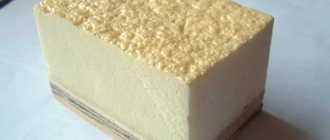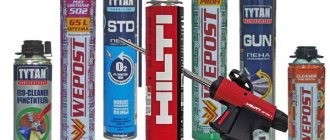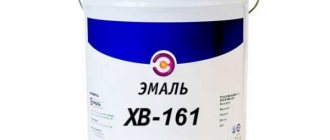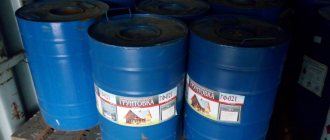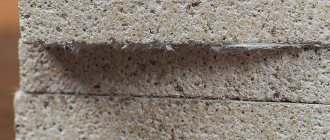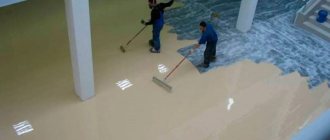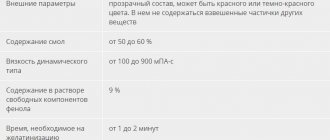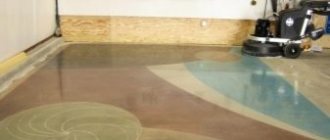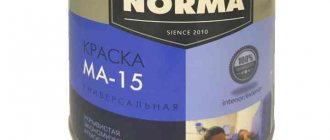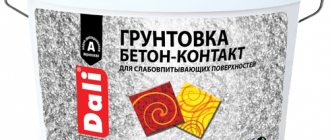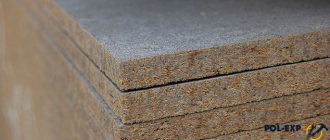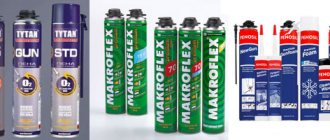Professional mounting foam TECHNONICOL 240 fire-resistant 1000 ml. Photo Petrovich
Fire safety is one of the indicators of the quality of constructed buildings . To achieve the required parameters, special materials are used , the list of which includes fire-resistant (fire-resistant, fire-resistant) polyurethane foam.
Polyurethane compounds are excellent insulators and protect against smoke, toxic gases and fire. Polyurethane foam is used in cases where a high level of fire protection is required. After all, if the main building materials are stable, then the auxiliary ones must meet similar requirements.
What is fireproof foam, features, advantages and disadvantages
Fire-resistant foam is one of the types of mounting compounds . It is a one- or two-component composition that increases its own volume after application. As the mixture hardens, it acquires a rigid shape, which makes it possible to fix various structures: window frames, door blocks and others. The basis of fire-resistant foams is liquid polyurethane . The composition also includes other components , each of which performs its own functions:
- catalysts make it possible to use foam at sub-zero ambient temperatures;
- stabilizers ensure uniform application and consistency of consistency on various surfaces;
- the gas ensures that the composition is pushed out of the cylinder;
- foaming agents (foaming agents) provide an increase in the volume of the mixture and its hardening;
- the fire-resistant properties of the foam are determined by antiprenes (usually mineral ones) and graphite or similar substances;
- dyes impart a red or pink color, which makes it possible to distinguish fireproof foam from regular foam and determine the fire resistance of the composition.
Reference. Fire-resistant foam may be inferior to conventional compositions in terms of foam formation.
The principle of “work” for refractory materials is standard: when sprayed, it approximately doubles in size, hardens and creates a high degree of adhesion, polymerization occurs due to internal chemical reactions or exposure to moisture present in the air.
Fire-fighting compounds have standard properties:
- high adhesion with various building materials, does not adhere well to plastics, glass, polyethylene;
- ease of use and processing, excess is easily cut off;
- resistant to mold, mildew and high humidity;
- retains its properties at temperatures ranging from -60 to +100 degrees Celsius;
- bio- and chemical resistance.
Polyurethane foam Tytan B1 fireproof professional 750 ml. Photo Petrovich
A feature of fire-resistant foams is the ability to withstand temperatures up to 1000 degrees . It does not ignite when exposed to open flame for a certain period of time indicated on the packaging and labeling. After this time, the foam still lights up, but when the flame stops it goes out on its own. Exposure to high temperatures does not cause the mixture to melt, flow or drip.
The disadvantage of fire-resistant polyurethane foam is the lack of resistance to ultraviolet radiation . Direct sunlight causes destruction. Therefore, after application, processing is necessary: painting, applying plaster or putty.
Heat-resistant compounds
They are used for sealing the outer surface of a fireplace or stove, as well as joints between brick pipes and roofing material. It is also possible to use sandwich pipes when installing, but not metal or stainless steel - the latter heat up too much.
The permissible heating temperature of the area is 350 C. These data must be indicated on the packaging.
Most of them are based on silicone, enriched with iron oxide. The composition can withstand constant heating up to 250 C and brief heating up to 315 C. Acid and neutral sealants are separated.
- Acidic - when the composition hardens, acetic acid is released, so the material is not used for sealing sandwich panels, as well as in cases where the walls of the chimney or roof include concrete or cement, for example, with a brick chimney, where a cement mortar was used as a solution .
- The neutral composition during polymerization produces water and alcohol, therefore it is compatible with metals - for example, metal tiles, concrete and cement.
The remaining qualities are common to all representatives of this group:
- resistance to ultraviolet radiation, due to which the material is applicable on the roof;
- waterproof – guarantees 100% protection against moisture;
- after polymerization, the sealant exhibits a certain plasticity and is therefore resistant to low vibration loads and deformations. However, this same quality also provides another feature - silicone compounds cannot be painted;
- the material has high adhesive properties. It adheres equally well to concrete, brick, glass, metal, etc.;
- the rate of hardening depends on the “freshness” of the paste and temperature conditions and can take from several hours to several days. Time information is provided on the material packaging.
Heat-resistant sealing pastes
Sealant for metal stove pipes is selected from this category, since such a composition can withstand constant heating up to 1200–1300 C, and short-term heating up to 1600 C. It is used to seal cracks in fireboxes where contact with open fire is expected. True, for the latter case only fire-resistant compounds are suitable. For chimneys on the roof, it is, of course, also used.
A pipe made of stainless steel or other alloy gets very hot. This creates additional difficulties when passing floors and roofs, and also requires special materials for thermal insulation and sealing. The only exception is the installation of a metal chimney on a condensing or pyrolysis boiler. Here, the temperature of the combustion products is only 150 C, so a heat-resistant composition would be more appropriate.
The basis of heat-resistant pastes is silicate. When polymerized, it forms an organosilicon compound that is extremely durable and 100% waterproof.
- Silicate pastes are no less resistant to solar radiation or rain and snow.
- Due to its complete chemical inertness, the sealant can be used with any material - concrete, cement, metal tiles on the roof or stone when laying.
- Adhesive properties are slightly lower. Sealant for stainless steel chimneys can only be applied after treating the smooth surface with an abrasive compound.
- Silicate paste forms a rigid, sealed joint. Vibration may cause it to crack.
The video demonstrates sealing seams with sealing pastes.
Types of fireproof foam, markings
Classification of fire-resistant compositions is carried out according to several criteria:
Scope of application. Household and professional. A significant part of the fireproof foam on the market is of the second type. Compositions for professional needs are produced in large-volume cylinders, the capacity of which exceeds 750 ml. They are designed to mount a pistol. Household formulations are equipped with a special plastic applicator tube. Professional foam has better resistance to open fire.
Professional fireproof mounting foam KRAFTOOL Kraftflex Premium B1 750 ml. Stroylandia Photos
Fire resistance class. The time during which the foam successfully resists the effects of an open flame depends on the fire resistance class, indicated by the marking on the cylinder:
- B1, highest fire resistance. Designed for insulation of buildings with increased fire safety requirements and with a maximum concentration of people. Used when installing stoves, fireplaces and other equipment that creates an increased danger. Retains properties during prolonged exposure to an open flame and does not support combustion.
- B2, middle class (level) fire resistance. Used for low-traffic structures. Cannot withstand open fire for a long time. When exposed to high temperatures, it melts and releases a small amount of toxins. Extinguishes on its own when the flame is removed. Suitable for sealing water supply, sewer and thermal communications.
- B3 - flammable foam , which is not popular in modern construction due to low efficiency, self-extinguishes when the flame stops.
Fire resistance coefficient is a parameter demonstrating the time of resistance to open fire at a temperature of 1000 degrees, measured in minutes, indicated in the marking, for example, EI 30 . The foam does not catch fire and retains its properties for 30 minutes. Compositions of this type are recommended for use in buildings with occupancy of no more than 300 people. EI 60 and EI 90 resist fire for 60 and 90 minutes, respectively, and are intended for use in educational and medical institutions, shopping centers. EI 120, EI 240 and EI 360 are compounds that provide the highest level of protection, resisting fire for up to 360 minutes. Suitable for buildings that have increased fire safety requirements.
Season of application, temperature conditions during application. There are summer, all-season and winter foam. Summer must be applied at temperatures from +5 to +30/35 degrees. All-season is recommended for use in summer or spring/autumn, so temperatures range from -5 to +30, in some cases - from -10 degrees. Winter foam is suitable for application at a temperature of at least -18; there are options that can withstand temperatures of -25 degrees, but they are not fire-resistant. In most cases, fire-retardant compounds are of the all-season type.
Expansion coefficient , which significantly affects material consumption, is measured as a percentage. Strongly expanding ones can increase in volume five times. Moderately expanding - three, weakly - two. Compositions with a low expansion coefficient are also common on the market; the minimum is 15%.
Reference. Using foam at sub-zero temperatures reduces the expansion coefficient. As a result, the volume of the mixture will be less than when used at higher temperatures.
Compound. One-component foam hardens at normal air humidity. Before application, it is recommended to moisten the surface to increase adhesive properties. To obtain the best result, the surface must be cleaned and primed. The two-component hardens during a chemical reaction.
Foam yield - the amount of composition obtained from one cylinder, measured in liters, often indicated in the labeling. The most popular options are those with a capacity of up to 65 liters.
How long does it take to dry? The time of film formation on the surface, processing and complete polymerization are shown on the cylinder.
Color. The main colors are red, pink, brown.
Protective screens around the stove
Protective screens are insulation panels that cover the side surfaces of the furnace and reduce the intensity of thermal radiation. Screens can be metal or brick. As a rule, they are used for metal furnaces.
Method #1 - metal screens
The most common protective screens are factory-made steel or cast iron sheets. They are installed around the stove, at a distance of 1-5 cm from the walls of the firebox. Depending on the need to insulate one side or another of the furnace, you can purchase side or front (front) screens. Many metal furnaces are initially manufactured with protective screens in the form of a protective casing.
Protective screens make it possible to reduce the temperature of external metal surfaces to 80-100°C and, accordingly, reduce the fireproof distance to 50 cm. The total distance from the firebox to the wall (including a gap of 1-5 cm) will be 51-55 cm.
Installing protective screens is not difficult. Thanks to the presence of legs, metal panels are easily bolted to the floor.
Method #2 - brick screens
A brick screen can cover all the side surfaces of a metal furnace, representing its outer cladding. Then the stove will be in a casing made of brickwork. In another case, a brick screen is a wall separating the stove and the flammable surface.
To lay the protective screen, solid fireclay bricks are used. The binder is cement or clay mortar. It is recommended to use half a brick (thickness 120 mm). But, if there is a lack of material, it is possible to make a wall of a quarter of a brick (60 mm thick), although in this case the thermal insulation properties of the screen will be reduced by half.
Small openings (sometimes with fire doors) are left at the bottom of the shield for air convection between the brick wall and the stove.
The brick walls of the screen must end at least 20 cm above the top surface of the oven. Sometimes the masonry goes all the way to the ceiling.
The brick screen is not installed flush against the walls of the stove, the optimal distance is 5-15 cm. The acceptable distance from the brickwork to the flammable wall is 5-15 cm. Thus, the use of a brick screen allows you to reduce the distance from the stove to the wooden wall to 22-42 cm (stove - ventilation gap 5-15 cm - brick 12 cm - ventilation gap 5-15 cm - wall).
Areas of application of fire-fighting foam
Fire-resistant polyurethane foam is intended for use in places that are subject to fire safety requirements catering establishments, restaurants and cafes; shopping centers.
Construction and repair work, sealing and fixing with fire protection are carried out using polyurethane foam, namely sealing openings when laying engineering systems and cables, insulating electrical wires, switches, connectors and sockets, water supply and heating systems, installing partitions, ceilings and fire doors.
Gun foam Mastertex B1 fireproof 750 ml. Photo by Leroy Merlin
SNiP also contains recommendations for the use of : sealing seams and joints near stoves and fireplaces, chimneys; for baths and saunas, in particular for insulating equipment; for gaps between frames with high fire safety standards.
In addition, fire-resistant foam is used:
- in work that requires insulation and fire protection, insulation of roofs, attics, attics;
- for thermal and noise insulation, sealing of engine compartments and car interiors;
- It is also recommended for conventional installation; it is better to choose foam with a low fire resistance coefficient than the standard option.
Selection rules
First of all, you need to clearly understand for what purposes these products will be used, because for reliable fixation of a door or window unit, a fire resistance rating of EI 60 will be sufficient, and for sealing seams in the ceiling at the point where it intersects the chimney of a sauna stove, fireplace or heating unit on gas or liquid fuel, firewood or coal requirements will immediately increase. Then it would be quite appropriate to purchase foam with fire resistance EI 240.
It is not difficult to choose the required type of foam, of which there is a lot on the domestic market. By replacing flammable types of polyurethane foam with it during the construction of a residential building, cottage, garage, workshop on their site, owners eliminate materials that, when burned, emit toxic flue gases, and increase the overall fire resistance of their property.
When choosing such a material for use, the main attention should be paid to rooms, their places and areas where constant or periodic heating of building structures and finishing materials from local heat sources occurs or is possible.
Consumption
Manufacturers usually indicate approximate consumption figures per unit area (1 sq.m.). But in practice, consumption depends on several factors :
- width of the treated surface,
- filling depth, joint thickness,
- ambient temperature and humidity,
- foam composition,
- method of application (using an applicator or gun),
- uniformity of application,
- the presence or absence of a dosing device,
- skills and level of professionalism of the performer,
- foam's ability to expand,
- trademark.
GROVER B1 professional fireproof all-season foam 750 ml. Photo by Maxidom
An important characteristic is foam performance. Cylinder with a volume of 300 ml. on average gives about 30 liters of foam, which is enough to install one door, 500 ml - 40-45 liters, it is possible to install two windows, 750 ml. — 50-55 l. will be enough to seal the cracks of two door frames. Some manufacturers provide consumption parameters for their own products. But the data provided by enterprises implies that work is performed under ideal conditions , which is extremely rare in practice.
In addition, there are calculation formulas . If the seam is rectangular, then the following formula is required - P = W x D, where:
- P—consumption, ml/1m.p of seam;
- W—seam width, mm;
- Г—seam depth, mm.
The formula for calculating foam consumption when filling triangular seams is P = 0.5 x W x D.
Some companies have online calculators on their websites; entering data (seam parameters, type and yield of foam, season of work) into which you can find out the required number of cylinders or seam length. But not a single instruction or calculation method provides an accurate result. All recommendations and directions are approximate. Therefore, it is recommended to purchase foam with a reserve.
When is protection needed at all?
The need to install protective casings and screens does not always arise. If a fire-safe distance is maintained between the stove and the nearest flammable surface, additional protection is not needed. At this distance, the IR rays are scattered, weakened, and the amount of them that the wooden wall receives can no longer lead to damage.
It is believed that the safe distance from the wall to the brick stove (quarter-brick laying) is at least 0.32 m, from the wall to the metal stove (not lined) - at least 1 m. For a metal stove lined from the inside with brick or fireclay, the distance decreases to 0.7 m.
Thus, maintaining fire safety distances is more possible in large baths, where the issue of saving space is not relevant. In family steam rooms, where every centimeter of space counts, installing a stove 0.3-1 m from the nearest walls is impractical. In this case, the safety distances established by the standards must be reduced using screens and casings.
Manufacturers
Many manufacturers offer refractory compounds; large companies often have more than one option in their product range.
Soudal fire-resistant mounting foam 750 ml. Photo Petrovich
Here are some examples:
- Makroflex FR77 PRO with a fire resistance coefficient of 240 minutes and fire resistance class - B1;
- Tytan Professional B1, marking demonstrates the fire resistance class, one-component composition is intended for use at temperatures from -10 to +30 degrees;
- TECHNONICOL 240 PROFESSIONAL is a one-component foam characterized by an affordable price, which gives it an advantage over foreign analogues;
- Soudal offers three options at once: for domestic use, for professional needs and with the “Click & Fix” marking;
- OGNEZA EI240 is applied at temperatures from +5 to +35 degrees, operated - from -40 to +80;
- Penosil Premium Fire Rated Foam B1 - summer foam that can withstand fire for three hours;
- NULLifire FF197 is a one-component professional product from an American manufacturer;
- Remontix is a Russian-made foam with an optimal price-quality ratio.
These options for fire-fighting compounds are not a complete list of offers from manufacturers. Other businesses and firefighting equipment are presented separately.
Poll: which is the best?
Each performer has his own opinion about the quality of fire-resistant foams, which can be expressed in a survey and in the comments to the article.
Use of material on various objects
The main area of application of foam is the construction industry, installation and installation of various structures and equipment, industrial production, housing and communal services.
In all cases where there is a need to provide thermal insulation of a structure or object, fire-resistant foam is used. Possible applications may include: 1.
Installation of electrical sockets, switches, and related equipment.
2.
Fastening insulation to pipelines transporting liquid fuel, including kerosene, gasoline, diesel fuel.
3.
Insulation of various building structures and building elements, for example, roofs or attics.
4.
In various special-purpose rooms experiencing thermal stress.
This number includes some production facilities, saunas, and boiler rooms. 5.
Use in transport. The substance is used to insulate engine compartments, control cabins, and mechanical compartments.
There are also special compositions for solving narrow problems related to thermal insulation, for example, fire-resistant foam for stoves. The characteristics of this material allow its use in insulating all types of heating and cooking furnaces.
Additional benefits come from the ability to use fire resistant foam as a common compound used in the construction industry. The low price and a number of advantages increase the demand for this universal material.
How to choose
When choosing, it is recommended to pay special attention to products from well-known brands . The purchase should be made from trusted suppliers, then the characteristics will correspond to the declared ones. There is no need to purchase products at a price much lower than stated from the manufacturer and official suppliers. There is a high probability of buying a low-quality product. Materials from leading brands are often counterfeited , hence the large number of negative reviews about foams from certain brands, in particular TECHNONICOL.
It is important to pay attention to the volume of the cylinder and the foam yield ; for different manufacturers, the first indicator may be the same, and the second may vary significantly.
Class B1 foam is recommended for installation of stoves and fireplaces, B2 - for insulating water supply, sewer, and heating networks, B3 - suitable for use in non-residential premises where there are no sources of open fire.
Metal welded and cast
Stainless steel does not interact with water and does not oxidize in atmospheric air, which is the reason for the use of this material for the production of pipe products and allows them to be used in places with high humidity. The pricing policy of this pipeline is significantly different from any other, but the high costs are justified, since fire-resistant stainless steel practically does not fail under the influence of high temperatures.
In production
Stainless steel fire-resistant pipe 20x23n18 is considered one of the most common among consumers, and due to the expensive material it is sold by weight.
The advantages include the absence of hardening, magnetization, as well as the preservation of all properties and characteristics in an aggressive environment, even when temperatures reach 1200 ℃. Most often, stainless steel products are used in high-temperature chimney systems. Their steel thickness must be at least 1 mm.
Seamless fire-resistant pipes that can withstand heavy loads are used for high-pressure systems. Such communications have no gaps and absorb pressure evenly. But a more durable and reliable solution would be to use cast heat-resistant pipes. They are characterized by large wall thickness and, accordingly, high price.
For domestic needs
Home heating systems often use fire-resistant furnace pipes.
The right solution would be to install stainless steel chimneys, which will last for decades. To seal joints and gaskets between insulation, it is necessary to use heat-resistant sealants, as well as use heat-insulating non-combustible materials.
When selecting steel pipes for chimneys, you should pay attention to the nickel content in the composition, which affects the interaction with sulfur compounds from combustion products. It is best to use materials alloyed with titanium in domestic conditions, although this is expensive
The purchase of fire-resistant pipes must be accompanied by a certificate or related documents confirming the quality of the product.
Recommendations for use
The method of application of polyurethane fire-resistant foam is no different from the use of conventional polyurethane compounds. Before use, you need to find an inconspicuous place and squeeze out the first portion, i.e. Carry out a test application to ensure the foam supply is evened out. The work is performed in the following order:
- working surfaces are cleaned of dirt, dust, oil stains, and moistened;
- Depending on the type of foam used, a gun or tube attachment may be required;
Reference. Pistol compositions can also be used at home, this ensures a more uniform application.
- The container is shaken vigorously for 30 seconds;
- the cylinder is turned over with the valve down at an angle of 90 degrees to the surface, foam is applied, the cavities are filled by 30-50%;
Reference. It is recommended to apply the mixture at positive temperatures, this will allow you not to increase consumption and achieve the best result, which can be obtained at temperatures from +20 to +23 degrees.
- after drying, the excess is cut off;
- The sealant is protected from ultraviolet radiation.
Important! Manufacturers' recommendations for use must be followed.
A few words about the application technique
The fire-resistant mounting compound is applied in the same way as a regular polyurethane compound.
- For convenience and economical consumption, a foam container is inserted into a mounting gun.
- Use a blade to cut off the tip of the dispenser at an angle of 45˚. The higher the cut, the thicker the seam will be.
- The solution should be applied to a clean, dry surface.
- The gun is tilted at an angle of 90˚ to the application plane.
- The cracks and gaps are filled to no more than 2/3 of the volume.
- After complete curing, excess foam is cut off with a blade.
- When working in cold weather, the foam itself must have a temperature of at least 15˚C.
Contaminated areas are cleaned with a dry, clean cloth without waiting for drying. Do not use water to wash off.
We recommend watching the video instructions:
